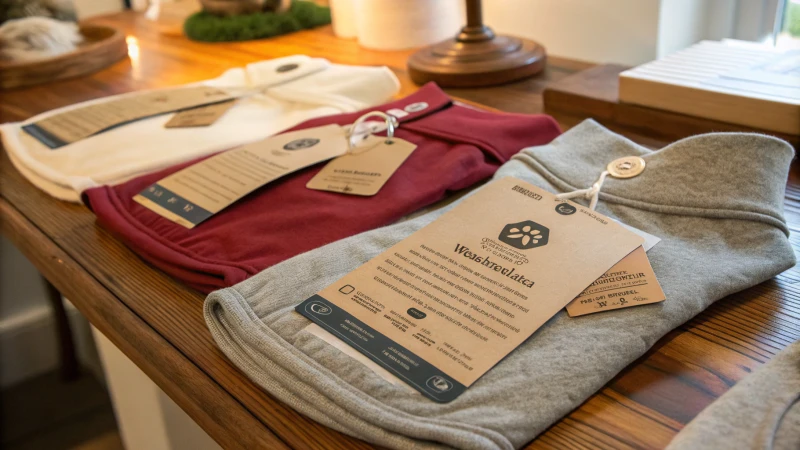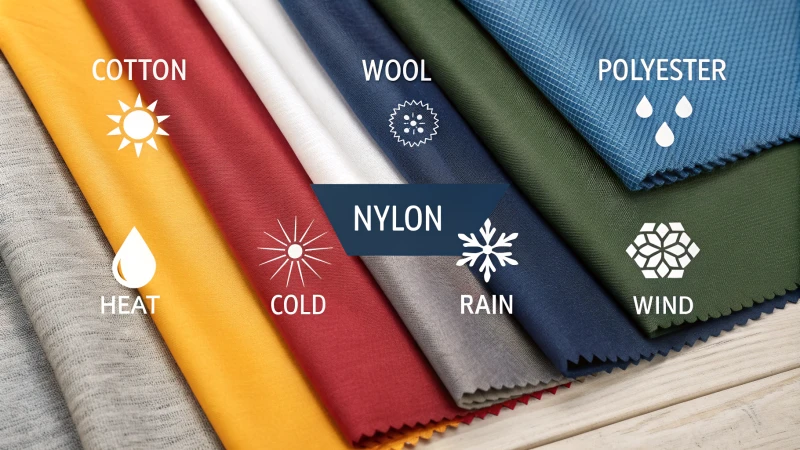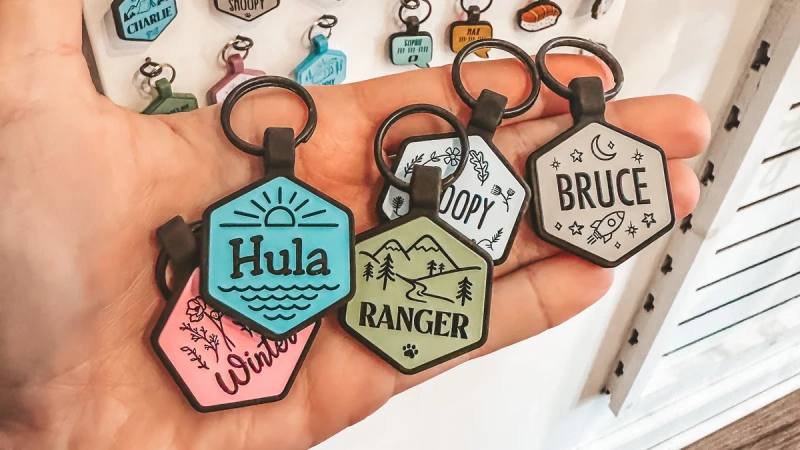
Is your furry friend ready for a fashion upgrade? Dressing your pup involves more than just style. Selecting the right material is important. It ensures your dog’s comfort and happiness.
When picking materials for dog clothing, think about breathability, durability and comfort. Look for natural fabrics like cotton and wool for everyday clothes. Synthetic options, such as polyester and fleece, suit weather-resistant needs. This guide really helps you select the best fabric for your dog.
As I explored various materials, I noticed how each one affects my dog’s experience. I remember when I first put a cotton shirt on my dog. It was lightweight and breathable. Perfect for a sunny day at the park. My pup seemed to really love it! On colder days, I chose cozy wool. Nothing beats snuggling with my furry buddy in a warm sweater. I discovered that synthetic fabrics like polyester and fleece are excellent for rainy outings. They keep my dog dry while we splash through puddles. My goal is always to see my pup look adorable while feeling comfy and safe.
Natural fabrics are always the best for dog clothing.False
While natural fabrics like cotton and wool are great, synthetic options can also provide benefits like weather resistance. Therefore, this claim is false.
Breathability is a key factor in selecting dog clothing materials.True
Breathability is crucial for dog comfort, especially in warm weather, making this claim true.
What Should I Consider When Choosing Dog Clothing Materials?
Choosing the right fabric for my dog’s clothes is very important. It’s not just about style. Comfort and health matter much more. I always think about key factors when I pick the best materials for my furry friend.
**When I choose materials for dog clothes, I focus on breathability, comfort, strength, matching the weather, special details and possible allergies. This way, my choices very likely bring the best comfort and happiness to my furry friend.
Understanding the Importance of Material Choice
Picking the right material for my dog’s clothing is really important for their happiness and health. Different fabrics bring different benefits and problems. These affect how the clothes not only look but also feel on my dog.
Key Factors to Consider꞉
-
Breathability꞉
- I often choose fabrics that let air pass through, especially in hot summer months.
- Cotton, a natural fiber, is often my choice for breathability. Sometimes, synthetic materials hold heat.
-
Comfort꞉
- My main focus is my pup’s comfort.
- Fabrics like fleece and cotton are soft, helping to prevent irritation. They suit sensitive dogs like mine.
-
Durability꞉
- I check how well the material withstands wear, knowing my dog loves intense play!
- Denim and polyester are really tough fabrics.
Climate Considerations
Weather where I live affects my choice of material a lot. In warm areas, lightweight and breathable fabrics like cotton or linen work best. In contrast, during cold days, I wrap my dog in wool or fleece for warmth.
Special Features
Certain materials include features for improved comfort and safety for my dog.
Waterproof Fabrics꞉ These are essential for wet days; they keep my pup dry but let moisture out.
Reflective Materials꞉ Ideal for night walks, boosting visibility and safety in low light.
Allergies and Sensitivities
I always keep allergies or sensitivities my dog might have in mind when I pick clothing. Some materials, like wool, could cause issues for certain dogs. It’s really smart to test with new clothes to check their comfort beforehand.**

Understanding the Importance of Material Choice
Choosing the right material for your dog’s clothing is crucial for their comfort and well-being. Different materials offer various benefits and potential drawbacks, influencing not just the look but also the feel of the clothing on your pet.
Key Factors to Consider:
-
Breathability:
- Look for fabrics that allow air circulation, especially in warmer climates.
- Natural fibers like cotton are excellent for breathability, while synthetic materials can sometimes trap heat.
- Consider breathable options like this guide1 for more insights.
-
Comfort:
- Always prioritize softness against your pet’s skin.
- Materials such as fleece or cotton prevent irritation, making them ideal for sensitive dogs.
- You can find more about comfortable fabric options in this article2.
-
Durability:
- Evaluate how well the material holds up against wear and tear, especially for active dogs.
- Fabrics like denim and polyester are known for their durability.
- Check out our table below comparing durability across different fabrics:
| Material | Durability | Best Use | Potential Drawbacks |
|---|---|---|---|
| Cotton | Moderate | Everyday wear | Attracts pet hair |
| Wool | High | Cold weather | Can be itchy |
| Polyester | High | Rainy conditions | Less breathable |
| Fleece | Moderate | Cold weather, easy care | Attracts lint |
| Denim | Very High | Active wear | Heavier fabric |
| Tweed | Moderate | Stylish outerwear | Coarse texture |
Climate Considerations
The climate where you live significantly impacts your material choice. For instance, if you live in a warm area, lightweight and breathable fabrics like cotton or linen are essential. Conversely, for colder regions, consider wool or fleece to keep your dog warm. For more detailed recommendations, explore climate-based clothing choices3.
Special Features
Some materials come with specialized features that can enhance your dog’s comfort and safety.
- Waterproof Fabrics: Ideal for wet conditions; these materials keep your pet dry while allowing moisture to escape to prevent overheating.
- Reflective Materials: Useful for nighttime walks, ensuring visibility and safety in low-light conditions.
- Discover more about the advantages of performance fabrics in our guide4.
Allergies and Sensitivities
Always consider any allergies or sensitivities your dog may have. Certain materials, like wool, may cause irritation for some pets. Conduct a patch test with new clothing to ensure comfort before extended use. For more information on handling pet sensitivities, refer to this resource5.
Breathable fabrics are essential for warm climates.True
Breathable materials like cotton help keep dogs cool in hot weather, preventing overheating and discomfort.
Wool is the best fabric for all dog breeds.False
While wool is warm, it can irritate sensitive skin; not ideal for every breed.
How Do Different Fabrics Perform in Various Weather Conditions?
Choosing the perfect fabric for my clothes seems like a hidden superpower. Style is one thing, but feeling comfortable is even more important. I want to feel ready for any weather. This is very important. Are you curious about how fabrics work in different climates?
Different fabrics work differently in various weather conditions. Breathable materials like cotton and linen suit hot weather. These allow air to flow easily. Wool and fleece offer warmth in cold climates. They keep you very cozy. Polyester and waterproof fabrics keep you dry on rainy days. Nylon or denim acts as a shield in windy conditions.

Understanding Fabric Performance in Different Weather Conditions
Choosing the right fabric is crucial for comfort and protection in varying weather conditions. Let’s explore how different materials perform across a range of climates.
1. Hot Weather
In warm weather, breathable and moisture-wicking fabrics are crucial. The right fabric can really change how you feel.
- Cotton:
- Characteristics: Light and airy.
- Performance: Absorbs sweat and keeps you cool; however, it holds moisture. I choose 100% cotton for casual days but avoid it when it’s very humid.
- Linen:
- Characteristics: Very breathable and loosely woven.
- Performance: Great for heat; dries fast and keeps you cool. My first linen shirt felt amazing, like a breeze, during a summer picnic!
Tip: Cotton and linen are great for summer clothes because they let air flow and absorb sweat well. Learn more about summer fabrics6.
2. Cold Weather
In cold times, warmth-retaining fabrics matter. Fabric choices became really clear to me during a sudden snowstorm last winter.
- Wool:
- Characteristics: Naturally warm and wicks moisture.
- Performance: Holds heat even when damp, ideal for cold, wet weather. My wool sweater really saved me from the cold that day!
- Fleece:
- Characteristics: Soft and not heavy.
- Performance: Keeps warmth without being bulky. I wear fleece under my jackets for cozy comfort on cold days.
Tip: Layering wool or fleece keeps you extra warm. For more warmth, try layering options these layering options7.
3. Rainy Conditions
Materials that repel water and dry fast are vital in rain. Trust me, after many soaked shoes, I started buying good rain gear.
- Polyester:
- Characteristics: Long-lasting and shrink-resistant.
- Performance: Dries fast and often repels water; good for rainy weather. My polyester rain jacket was a life-saver in a sudden downpour!
- Waterproof/Breathable Fabrics:
- Characteristics: Block water but let body moisture escape.
- Performance: Best for staying dry without getting too hot; the right waterproof jacket totally changed my rainy day!
Tip꞉ Pick waterproof jackets using polyester blends for the best results Explore waterproof options8.
4. Windy Conditions
Windproof materials shield from strong gusts. I understood this while caught in a windstorm on my bike.
-
Nylon:
- Characteristics꞉ Lightweight and sturdy.
–
–
–
–
–
–
–
–
–
–
–
–\ \ \ \ \ \ \ \ Windy Conditions Recommended Fabrics Key Benefits —————— ——————— ——————– Hot Cotton, Linen Breathable, moisture-wicking Cold Wool, Fleece Insulating, retains warmth Rainy Polyester Quick-drying, water-resistant Windy Nylon Wind-resistant, durable Tip꞉ A nylon windbreaker is perfect for windy days Find stylish windbreakers9.
rnr### Summary of Fabric Performance by Weather ConditionBy understanding the characteristics of various fabrics through personal experience,
you can make informed choices that enhance your comfort regardless of the weather.
Cotton is ideal for cold weather due to its insulating properties.False
Cotton does not provide adequate insulation for cold weather; wool or fleece is recommended instead.
Linen dries quickly and regulates body temperature in hot climates.True
Linen's loose weave allows for breathability and moisture-wicking, making it perfect for hot weather.
What Materials Are Best for Pets with Sensitive Skin?
Finding the right materials for your pet’s sensitive skin can be a heartfelt journey. Some fabrics keep your furry friend comfortable and free from irritation. Your pet deserves the best!
Pets with sensitive skin should wear natural fabrics. Cotton and bamboo are great choices. These materials allow the skin to breathe and feel soft. Avoid synthetic materials. They may cause irritation.

Understanding Sensitive Skin in Pets
Having an animal friend with sensitive skin is very challenging. My own pet, Max, often experiences skin problems. It breaks my heart to see him scratch and feel uncomfortable. Pets, like humans, have sensitive skin due to allergies, infections or genetics.
To minimize the risk of irritation, it’s crucial to choose the right materials. For example, natural fibers tend to be more skin-friendly compared to synthetic options. Let’s explore some recommended materials in detail.
Recommended Materials for Sensitive Skin
When selecting clothing for pets with sensitive skin, consider the following materials:
| Material | Characteristics | Benefits | Considerations |
|---|---|---|---|
| Cotton | Soft, breathable, lightweight | Highly absorbent; gentle on skin | Attracts pet hair; less durable |
| Merino Wool | Soft, moisture-wicking, insulating | Regulates temperature; suitable for cold | Can be itchy for some dogs; choose soft varieties |
| Bamboo | Naturally antibacterial, soft | Reduces odor; hypoallergenic | Limited availability; may be pricier |
| Fleece | Soft, warm, lightweight | Provides insulation; machine washable | Attracts lint and hair; choose high quality |
These materials not only provide comfort but also help in regulating temperature, which is essential for sensitive skin. For more details on pet-friendly fabrics, check out this in-depth guide10.
Fabrics to Avoid
Knowing what to avoid is as crucial as knowing the best options. Here are fabrics to stay away from:
- Synthetic Fabrics: Polyester and nylon trap warmth and moisture against the skin causing irritation.
- Lycra/Spandex: These are stretchy but fit tightly leading to overheating.
- Silk and Linen: Luxurious but hard to clean and not durable for active pets.
Avoiding these fabrics keeps Max at ease during play and cuddles. For more information on what fabrics to avoid, consider reading this helpful article11.
Tips for Choosing Pet Clothing
Here are some useful tips for picking pet clothing:
- Look for Labels: Always inspect labels for fabric contents. Choose materials soft on pet skin.
- Choose Loose Fits: Select clothes that are not tight. This allows airflow and minimizes skin friction.
- Consider Allergies: Avoid materials that may trigger known allergies in your pet.
- Trial and Error: Finding the right fabric might take a few tries. I recall testing several shirts before Max found comfort in one.
For a comprehensive list of allergy-friendly fabrics you can find additional resources at this link12.
Remembering these tips helps your pet stay comfortable and happy in clothes meant for sensitive skin. Our pets rely on us to keep them safe and warm.
Natural fabrics are better for pets with sensitive skin.True
Natural fibers like cotton and bamboo are soft and breathable, making them ideal for pets with sensitive skin, reducing irritation and enhancing comfort.
Synthetic materials are safe for sensitive-skinned pets.False
Synthetic fabrics can trap heat and moisture, potentially causing irritation, making them unsuitable for pets with sensitive skin.
What Fabrics Should I Steer Clear of When Choosing Dog Clothing?
Selecting the best fabric for your furry friend’s clothes is more than a fashion choice. It concerns their comfort and joy. Now, let’s explore the fabrics you probably want to avoid to keep your pup feeling wonderful.
Choose dog clothing made from cotton or wool. These fabrics are breathable and strong. Avoid silk, linen, lycra and spandex. These materials might be uncomfortable. They are not durable. They also trap heat. Cotton and wool provide comfort and support.

Fabrics to Avoid for Dog Clothing
When selecting fabrics for dog clothing, it’s essential to consider materials that could negatively affect your pet’s comfort and safety. Below are fabrics you should avoid:
| Fabric Type | Reasons to Avoid |
|---|---|
| Silk | Luxurious but delicate; difficult to care for and may not withstand rough play or frequent washing. |
| Linen | While breathable, it wrinkles easily and lacks durability, making it unsuitable for active dogs. |
| Lycra/Spandex | Tight-fitting materials can cause overheating and restrict movement, especially during extended wear. |
Why Certain Fabrics Can Be Problematic
-
Silk and Linen: Although these fabrics offer elegance, they often require special care. They can become easily damaged during playtime or wash cycles, leading to a poor investment in your dog’s wardrobe. Moreover, they lack the necessary durability for everyday use.
Learn more about silk vs linen13. -
Lycra/Spandex: These materials might seem like a good option for their stretchability, but they lack breathability and can lead to overheating, especially in warmer climates. Extended wear can cause discomfort as they cling tightly to the dog’s skin.
Find out more on breathable fabrics14.
Potential Reactions to Fabrics
When dogs wear uncomfortable clothing, they may exhibit signs of distress, such as:
- Excessive scratching or biting at the fabric
- Reluctance to move or wear clothing
- Skin irritations or rashes from chafing
It’s crucial to monitor your pet’s reactions when trying new clothing. Opt for materials that are known for their comfort and breathability to avoid these issues.
Check out more on dog comfort15.
Alternatives to Avoided Fabrics
Instead of opting for the aforementioned materials, consider more suitable alternatives:
- Cotton: Lightweight and breathable, perfect for everyday wear.
- Wool: Great for colder weather due to its insulating properties.
- Polyester Blends: Durable while maintaining some breathability.
- Fleece: Provides warmth without being overly heavy.
By choosing the right fabrics, you can ensure your pet remains comfortable and stylish.
Explore more about dog clothing materials16.
Silk is a durable fabric for dog clothing.False
Silk is delicate and not suitable for active dogs due to its fragility.
Lycra can cause overheating in dogs during wear.True
Lycra lacks breathability and can restrict movement, leading to discomfort.
Conclusion
This guide explores the best materials for dog clothing, emphasizing comfort, breathability, and durability while highlighting suitable options for various climates.
-
Clicking this link will provide you with expert insights on breathable fabrics that are perfect for dog clothing, ensuring your pet’s comfort. ↩
-
Explore this article to discover which soft materials are best suited for dogs with sensitive skin. ↩
-
This guide offers recommendations on choosing dog clothes based on climate, ensuring your dog stays comfortable in all seasons. ↩
-
Learn about performance fabrics that provide additional benefits like waterproofing and breathability for active dogs. ↩
-
This resource will help you identify signs of allergies in dogs related to clothing materials, ensuring their comfort and safety. ↩
-
This link offers insights on fabric properties that are essential for selecting the right clothing materials based on weather conditions. ↩
-
Explore different types of insulating fabrics suitable for cold weather conditions through this recommended resource. ↩
-
Learn about waterproof fabrics and their benefits for rainy weather by checking this informative page. ↩
-
Discover effective windproof materials and their applications in outdoor clothing by following this link. ↩
-
This link will provide expert insights on choosing the best materials for sensitive skin, enhancing your understanding of pet comfort. ↩
-
Explore this resource for detailed information on fabrics to avoid if your pet has sensitive skin, ensuring you make informed choices. ↩
-
Discover a list of allergy-friendly materials that can improve your pet’s comfort and help manage skin sensitivities. ↩
-
This link will help you understand why some fabrics may not be suitable for your dog’s clothing, ensuring better choices. ↩
-
Explore this link to learn about breathable fabrics that keep your dog comfortable during extended wear. ↩
-
Discover more about ensuring your pet’s comfort when selecting clothing materials. ↩
-
This resource provides an in-depth look at suitable dog clothing materials you can choose instead. ↩



